Notes related to Spain
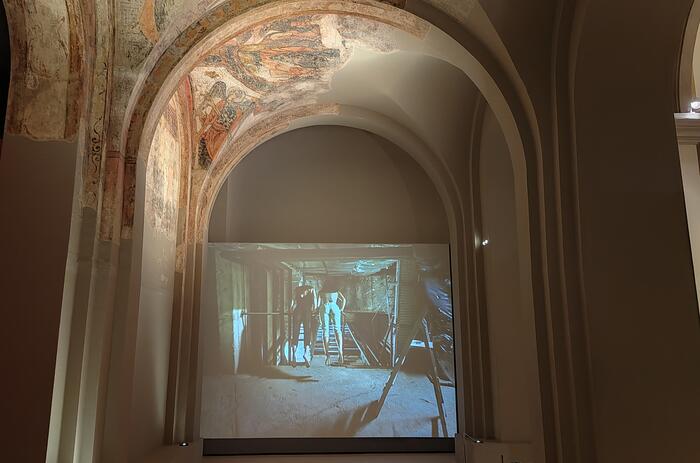
ANCAROLA’S ARCHITECTURAL REINTERPRETATION AT THE MNAC
By Álvaro de Benito
The Force of the Display. Gae Archive is the title of the project by Nora Ancarola (Buenos Aires, Argentina, 1955) currently on view at the National Art Museum of Catalonia (MNAC).

GUGGENHEIM BILBAO RECLAIMS THE FIGURE OF VIEIRA DA SILVA
By Álvaro de Benito
The Guggenheim Museum in Bilbao presents Anatomy of Space, an extensive exhibition dedicated to Maria Helena Vieira da Silva (Lisbon, Portugal, 1908 – Paris, France, 1992), which primarily encompasses her production from the 1930s through the 1980s. The exhibition is structured around two fundamental axes: architecture and the architectural landscape as compositional frameworks, and memory as the generator of the image.

MARCELLE, BASUALDO, AND PRIETO INCLUDED IN CONCEPTUAL EXHIBITION AT COLLEGIUM
By Álvaro de Benito
Collegium is hosting at its headquarters in the Castilian town of Arévalo the exhibition Jaque. Poder, tiempo e imagen en estado de juego (Check. Power, Time, and Image in a State of Play), a conceptual show that stems from the relationship between chess and the Torre de los Ajedreces, part of the Romanesque-Mudejar style Church of San Martín, which currently serves as the institution’s main headquarters. The building, dating from the 11th and 12th centuries, features an unusual brick frieze in a checkerboard pattern that evokes the chessboard and the strategic dimension of the game.
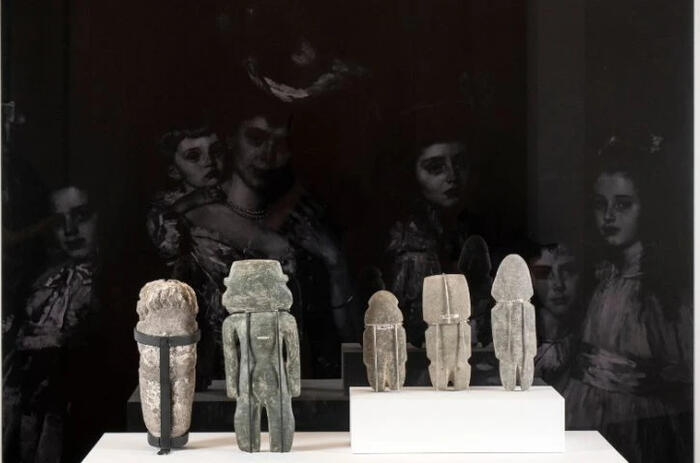
THE LATEST EVOLUTION OF BLACK MIRROR / ESPEJO NEGRO BY LASCH, AT CASA DE MÉXICO
By Álvaro de Benito
The Fundación Casa de México in Spain hosts Re/Generación, a new installation from the Black Mirror / Espejo Negro series produced by Pedro Lasch (Mexico City, Mexico, 1975) and curated by the National Institute of Anthropology and History of Mexico (INAH). Originating from an initiative originally produced by the Nasher Museum of Art in Durham, North Carolina, in 2007, the series has been transformed through various techniques, evolving its language toward a narrative that makes it impossible to separate past and present, as well as spectator and proposal.
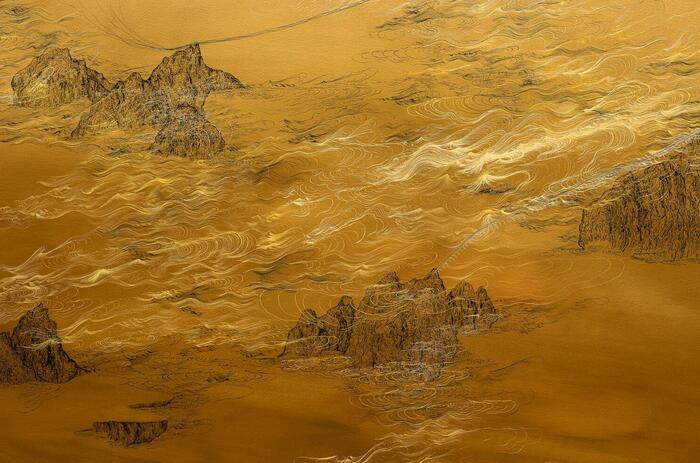
THE SUBTLETY OF SANDRA CINTO, AT ES BALUARD
By Álvaro de Benito
Es Baluard in Palma de Mallorca presents Preludio para el sol y las estrellas (Prelude for the Sun and the Stars), a project by Sandra Cinto (Santo André, Brazil, 1968) that transforms the museum space into a realm suspended between perception, time, and matter. The result envelops visitors in an expanded landscape that invites reflection through stillness and contemplation, where the sensory and the act of pausing become central to the experience.

LATIN AMERICAN ARTISTS IN SPAIN: NOTES FROM A RESEARCH PROJECT
By Mónica Sotos
What are the successive diasporas of Latin American artists to Spain from the final years before the beginning of the 21st century to the present about? Article 1 of a 3-part series.
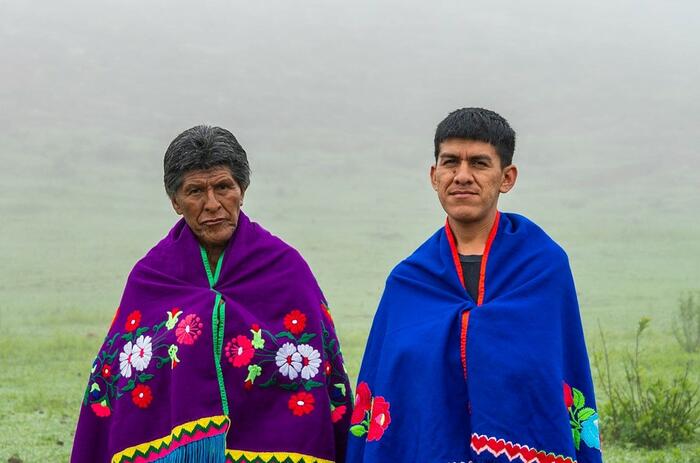
CONDEDUQUE CONNECTS ITS ARTS PROGRAMMING WITH LATIN AMERICA
By Álvaro de Benito
Condeduque, one of Madrid’s leading cultural centers, has unveiled its seasonal program, which establishes a strong connection with Latin American art and thought. The municipal institution, which recently appointed the Mexican writer Jorge Volpi to oversee the center’s cultural direction, has also redesigned its proposals into seven areas of activity, reinforcing connections between the various performing arts and exhibition spaces.
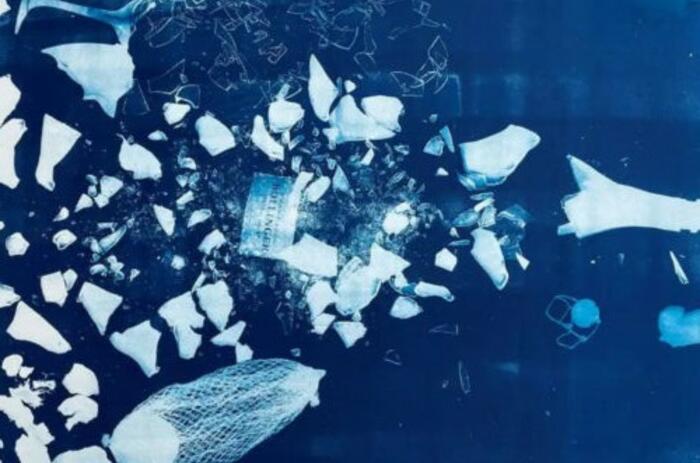
REFLECTION ON THE RESIDUAL IN AGUIRRE AND DELPIN IN MADRID
By Álvaro de Benito
Inventory of Fragile Materials is the title of the exhibition by Rocío Aguirre (Concepción, Chile, 1989) and Camilo Delpin (Concepción, Chile, 1989), presented at Spolia Haus until mid-month. Organized in collaboration with the Chilean Embassy in Spain, the Chile-Spain Foundation, and PHotoESPAÑA, the exhibition brings together two projects that, while distinct in their visual idioms, converge conceptually in their shared investigation of the residual.
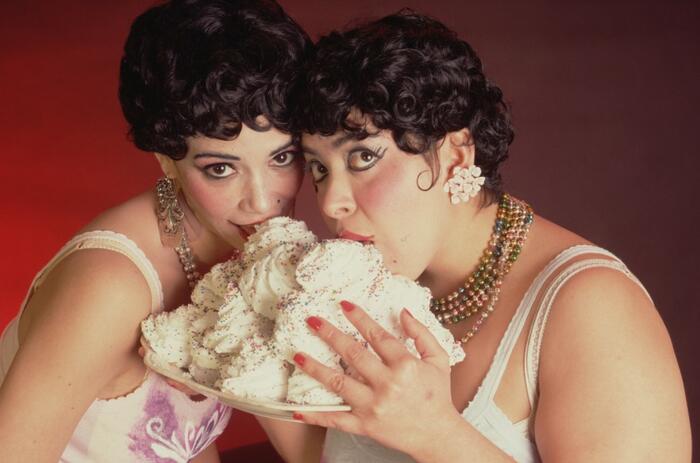
COCO FUSCO'S ACTIVISM TAKES OVER MACBA
By Álvaro de Benito
Barcelona's MACBA presents I Have Learned to Swim on Dry Land, the first monographic exhibition that a Spanish institution dedicates to Cuban-American artist and activist Coco Fusco (New York, USA, 1960). The exhibition, titled after the opening sentence of Virgilio Peña's short story Swimming, offers a journey through several thematic nuclei revolving around words, language, and silence, as well as the semiotics and symbolism entwined with these concepts.

MEMORY, PHANTASY AND RESISTANCE IN NAUFUS RAMÍREZ-FIGUEROA
By Álvaro de Benito
Naufus Ramírez-Figueroa (Guatemala City, Guatemala, 1978) has long warranted a mid-career exhibition such as the one hosted by the Museo Reina Sofía. His ongoing activity and presence in institutions and performances over recent years have positioned the Guatemalan artist as a key figure in the development and visibility of contemporary Central American art beyond its geographic framework.
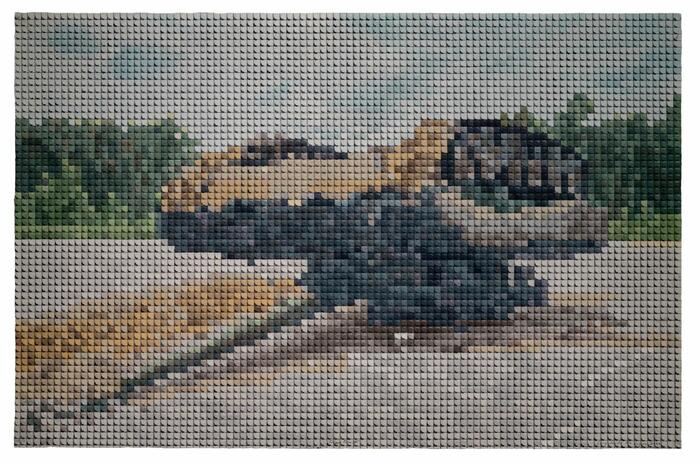
LATIN AMERICA AT THE PONTEVEDRA BIENNIAL: VISIONS OF VIOLENCE
By Álvaro de Benito
Until the end of September, the Galician city of Pontevedra is reviving its Art Biennial, an event that has been held since 1991 and now reaches its thirty-second edition under the slogan Volver a ser humanos (Becoming Human Again). Under this premise, Antón Castro, along with Agar Ledo and Iñaki Martínez Antelo, have curated a proposal centered on war, violence, and the traces they leave in society and humanity.
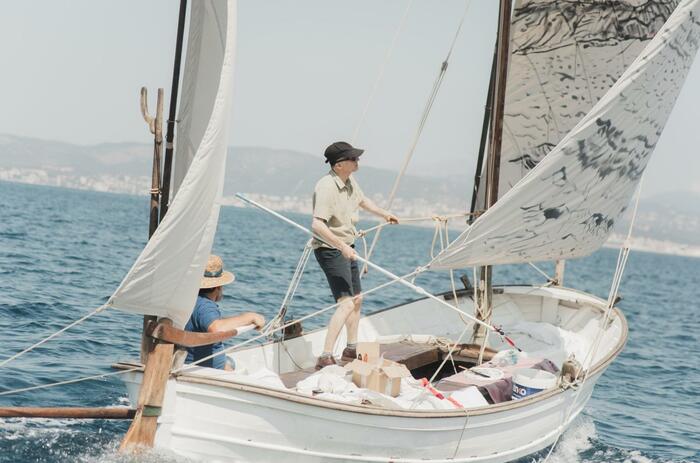
ALBERTO BARAYA, AT MAJORCA’S BIENNAL B
By Álvaro de Benito
Alberto Baraya (Bogotá, Colombia, 1968) presents his project Llatina i Mestral (Catalan for Lateen and Mistral)as part of the B Biennial in Majorca. The work begins with a performative action in which the artist paints directly onto a sail while at sea. The sail becomes a canvas that captures both a physical journey and a conceptual one.

PRISCILLA MONGE UNLEASHES HER EMANCIPATORY CRY AT THE CGAC
By Álvaro de Benito
Priscilla Monge (San José, Costa Rica, 1968) arrives at the Galician Center for Contemporary Art (CGAC) with her exhibition Cuestiones de vida o muerte (Matters of Life and Death). This show brings together works from all stages of the Costa Rican artist’s career, establishing her as a key figure in Central American art through her commitment to social critique.

A TECHNOLOGICAL GAZE AT THE PARIETAL ART BY SOFÍA CRESPO
By Álvaro de Benito
Sofía Crespo (Buenos Aires, Argentina, 1991) often centers her work on the use of biology-inspired technology. In her exploration of the common ground between artificial intelligence and the way it generates images, on the one hand, and human perception of the environment, on the other, there is a turning point in the Argentine artist's practice.

PEMJEAN AND HIS RECONSTRUCTION OF SPACE FROM MEMORY AT COAM
By Álvaro de Benito
The Official College of Architects of Madrid (COAM) is hosting No tan lejos (Not So Far Away), an exhibition by Emilio Pemjean (Santiago, Chile, 1971), which continues to explore his characteristic artistic approach that blends photography, design, architecture, and painting. In this exhibition, the Chilean artist presents a series of imagined and reconstructed spaces, virtually brought back to life through memory, which makes their reconstruction possible.

CHAOS AND TECHNOLOGY BY SANTOSCOY, AT THE MUSEUM OF AMERICA
By Álvaro de Benito
The Museum of America is hosting an exhibition of paintings by Juan Carlos Santoscoy (Guadalajara, Mexico, 1973) in its La Tapada gallery, open until the end of the month. Titled Algoritmos del caos (Algorithms of Chaos), the show features a selection of the artist’s most recent large-scale works, which engage with pressing themes in contemporary art such as global warming and the overexploitation of natural resources.

SIGN, STONE, AND TIME: A CONTEMPORARY EXHIBITION IN CANTABRIA
Cave Art Centre of Cantabria 'Alberto I de Monaco' in Puente Viesgo is hosting its first-ever contemporary art exhibition.

MARCO HOSTS THE POETICS OF LAURA LIO
By Álvaro de Benito
MARCO, the Museum of Contemporary Art in Vigo, presents Savia y sangre (Sap and Blood), a solo exhibition by Laura Lio (Buenos Aires, Argentina, 1967), which reveals the artist’s social vision and commitment through her work. Lio's practice involves a meticulous observation of certain organic and natural processes in search of a kind of internal order. With a poetic approach, the Argentine artist based in Spain challenges this natural structure through visual language and words.
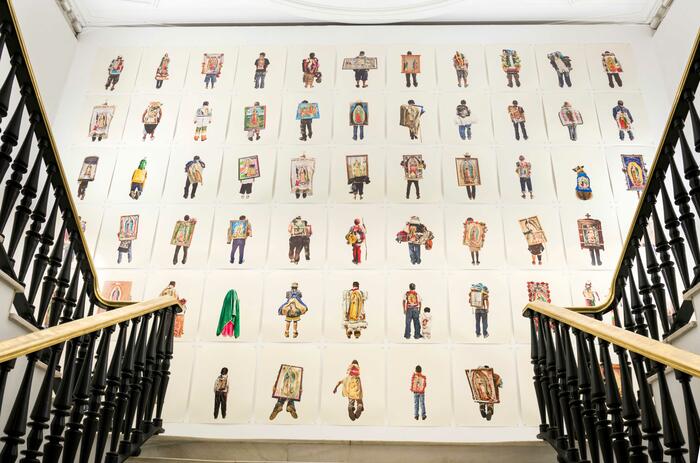
THE VIRGIN OF GUADALUPE: BETWEEN CRAFTS AND ANTHROPOLOGY
By Álvaro de Benito
The Casa de México Foundation in Spain presents Guadalupe. La Virgen de México (Guadalupe. The Virgin of Mexico), an extensive program of exhibitions and activities centered around one of Mexico's most iconic and anthropologically significant figures. In addition to lectures and various screenings, the program revolves around two main themes: craftsmanship and popular culture on one hand, and anthropology on the other.
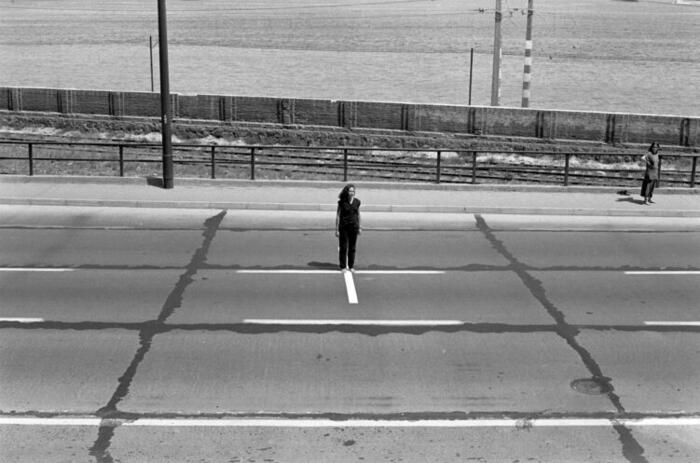
ACTION, STRUGGLE, AND LANGUAGE BY LOTTY ROSENFELD AT THE CBA
By Álvaro de Benito
The Círculo de Bellas Artes in Madrid is hosting the exhibition By Pass. La frontera del signo (By Pass. The Frontier of the Sign), a comprehensive presentation of the work of Lotty Rosenfeld (Santiago, Chile, 1943–2020), a key figure in Latin American video art whose practice emerged at the intersection of political activism and the creation of images as spaces of expression and freedom.
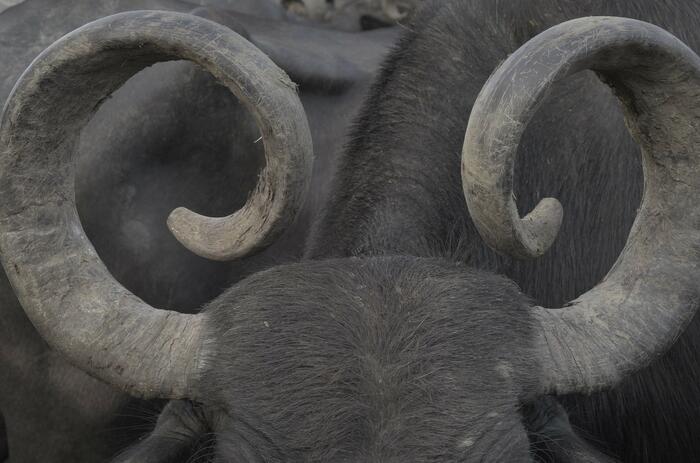
BIENALSUR CURATES LATIN AMERICAN VIDEO EXHIBITION AT THE REINA SOFÍA
By Álvaro de Benito
The Reina Sofía Museum, in collaboration with BIENALSUR, presents the exhibition Resistencia. Una selección de video sudamericano (Resistance: A Selection of South American Video). Curated by Argentine art historian Diana Wechsler, artistic director of BIENALSUR, the exhibition offers two complementary ways to engage with the works, both situated around the museum’s cinema hall.
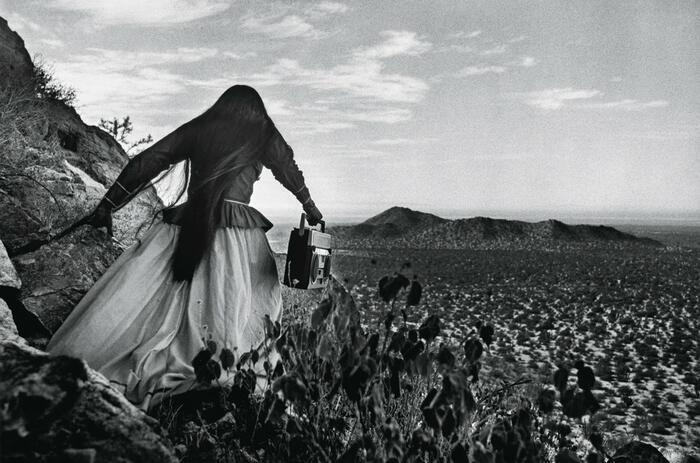
GRACIELA ITURBIDE RETROSPECTIVE AT CASA DE MÉXICO
By Álvaro de Benito
The Casa de México Foundation in Spain is hosting Cuando habla la luz (When Light Speaks), the first retrospective of Graciela Iturbide (Mexico City, 1942) since she received the 2025 Princess of Asturias Award for the Arts. Curated by Juan Rafael Coronel Rivera, the exhibition brings together 115 works spanning from 1972 to 2017.
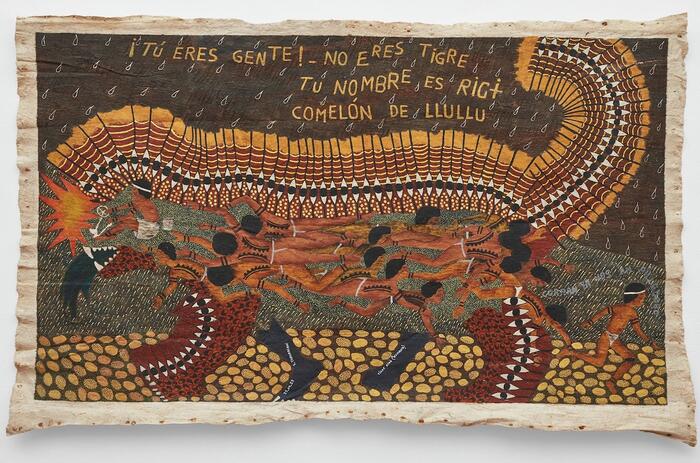
MYTH AND RESISTANCE IN NEREYDA LÓPEZ AND SANTIAGO YAHUARCANI, AT THE CBA
By Álvaro de Benito
The Círculo de Bellas Artes in Madrid presents Somos raíces (We Are Roots), an exploration of the creative worlds of Santiago Yahuarcani (Pucaurquillo, Peru, 1960) and Nereyda López (Pebas, Peru, 1965), two of the most prominent figures in contemporary indigenous art. Both artists draw from the oral traditions and cosmologies of their respective peoples—the Uitoto in Yahuarcani’s case, and the Tikuna and Cocama in López’s—to give voice to languages of resistance.
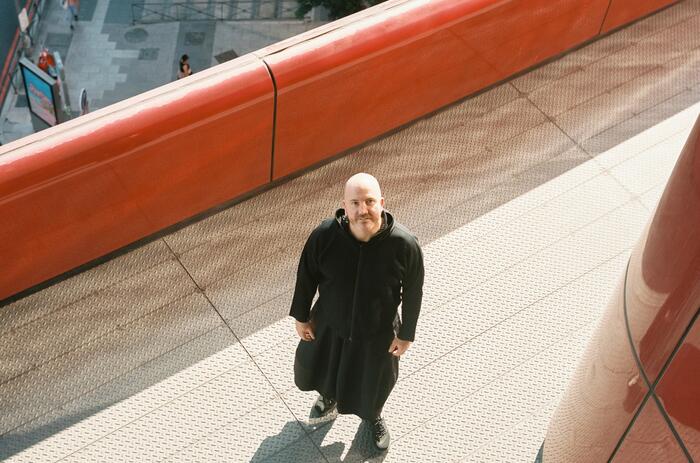
INTERVIEW WITH MANUEL SEGADE
By Álvaro de Benito
Manuel Segade (La Coruña, Spain, 1977) celebrates two years this month at the helm of Spain’s largest public museum of contemporary art. Since taking over as director of the Reina Sofía, he has implemented a series of exhibition and institutional strategies that have gradually shaped the museum’s strong personality and clear direction. In addition to progress on gender and feminist issues, decolonial thinking plays an important role in his vision—always from a perspective that necessarily looks to both sides of the Atlantic. Segade never seems to lose his enthusiasm, as evidenced by his expression and way of speaking. He welcomes us into his office at the Reina Sofía to finalize ideas and details, and to discuss the museum’s positioning and approach regarding Latin America.
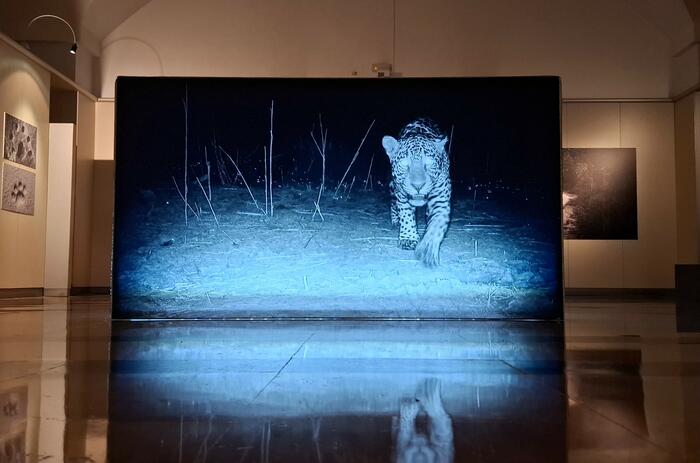
ART, COMMUNITY, AND ECOLOGY IN THE MYSTICISM OF THE JAGUAR, AT THE MUSEUM OF AMERICA
By Álvaro de Benito
The Museum of America in Madrid is hosting El sueño del jaguar (The Dream of the Jaguar), an exhibition curated by visual artist Fredi Casco (Asunción, Paraguay, 1967) and photographer Fernando Allen (Asunción, Paraguay, 1957), which brings together artistic, ethnographic, and scientific perspectives on the jaguar and its symbolic and ecological significance.
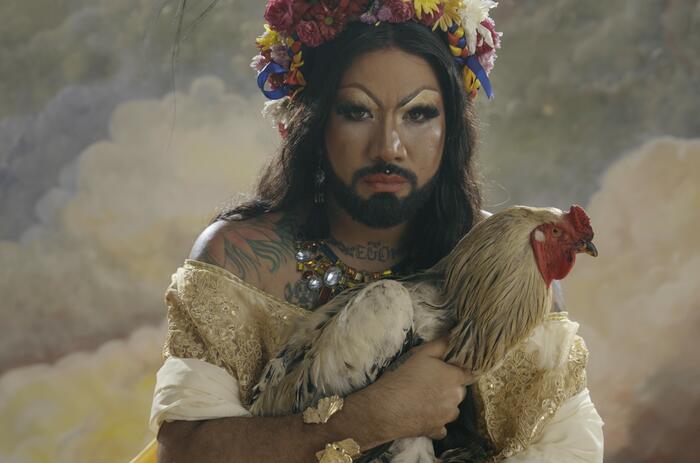
A GAZE INTO SALVADORAN AUDIOVISUAL ART AT THE REINA SOFÍA
From June 19 to 28, Madrid’s Reina Sofía Museum will host Los reyes de la página roja (The Kings of the Red Page), a program dedicated to contemporary audiovisual productions from El Salvador. Part of the series Other Visions of Central America, this selection has been curated by Salvadoran artist Patricio Majano, this year’s resident at the Instituto Cáder de Arte Centroamericano—an initiative promoted by the Reina Sofía Museum Foundation and the museum itself to support research and dissemination of Central American art.
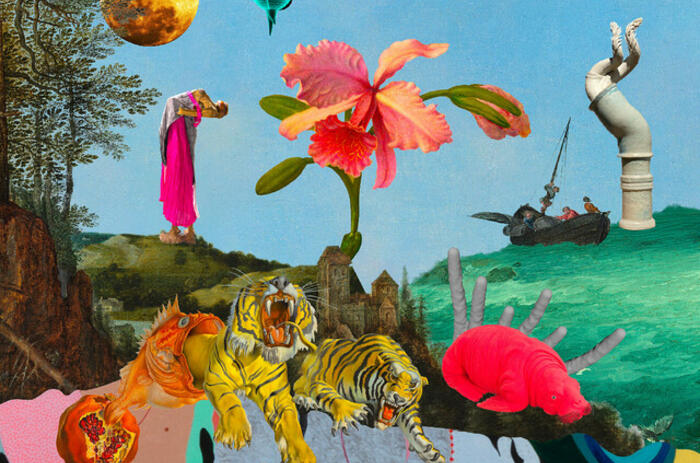
STORIES BEYOND THE HUMAN AT THE NATIONAL MUSEUM THYSSEN-BORNEMISZA
Terraphilia—a term combining terra (earth) with philia (love and friendship)—evokes a deep-rooted connection of affect, care, and responsibility toward the earth and its multitudes of inhabitants. In a time of planetary unmaking and gaping inequalities, the exhibition turns to art to orient us toward transformative ways of being—mobilizing interspecies kinship, new forms of collectivity, and practices of planetary love.
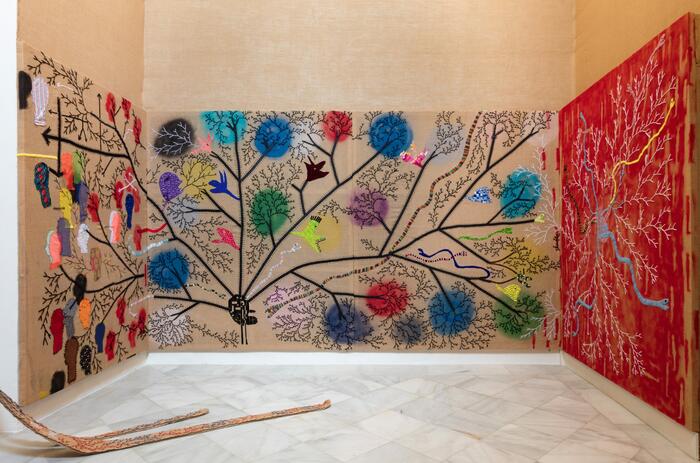
RITE AND SYNCRETISM IN THE DIALOGUE OF CALDERIUS AT THE CAAC
The Andalusian Center of Contemporary Art (CAAC) presents Sensemayá. Cánticos para matar a la Culebra (Sensemaya. Chants to kill the snake), the first solo institutional exhibition in Spain by Claribel Calderius (Havana, Cuba, 1986). Conceived specifically for the San Bruno Chapel, the project is a site-specific intervention that draws on the space’s historical and spiritual resonance—qualities that align seamlessly with the symbolic universe of the Cuban artist.

A NEW REVIEW ON CLAUDIA ANDUJAR’S A SÔNIA
The Elba Benítez Gallery in Madrid is currently hosting an exhibition of photographs from A Sônia, a project by Claudia Andujar (Neuchâtel, Switzerland, 1931), created in 1971. This body of work stands as one of the most significant early explorations into the creative manipulation of the photographic snapshot. For this occasion, the exhibition focuses on a carefully curated selection of images that establish a dialogue of balance, intensity, and chromatic richness with the surrounding space.
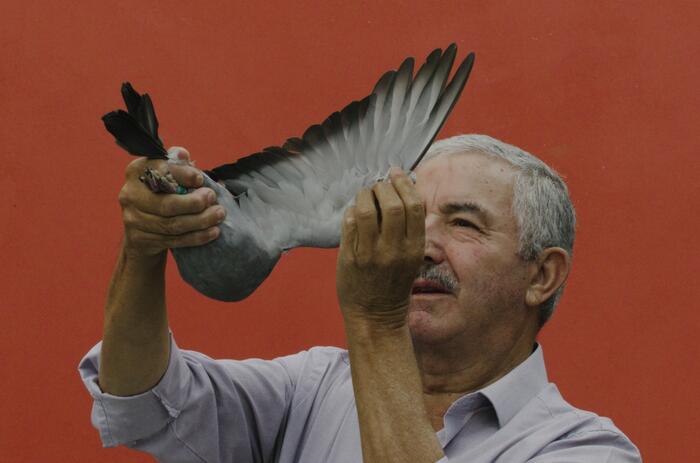
JONATHAS DE ANDRADE IN MOTION, AT CONDEDUQUE
The videographic universe of Jonathas de Andrade (Maceió, Brazil, 1982) is only one part of his broader artistic practice. It is, of course, significant—complementing other worlds that shape the ideology and imaginary embedded in both the work and the persona of the Brazilian artist. For this reason, the selection of exclusively audiovisual works under the title Tiempo, sueño, olor (Time, Dream, Scent), on view at Madrid’s Centro de Cultura Contemporánea Condeduque, offers a concise, representative, and necessary approach that ultimately bears witness to a part for the whole.


